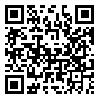Mon, Apr 21, 2025
[Archive]
Volume 18, Issue 4 (December 2022)
IJEEE 2022, 18(4): 114-123 |
Back to browse issues page
Download citation:
BibTeX | RIS | EndNote | Medlars | ProCite | Reference Manager | RefWorks
Send citation to:



BibTeX | RIS | EndNote | Medlars | ProCite | Reference Manager | RefWorks
Send citation to:
Dodangeh M, Ghaffarzadeh N. An Intelligent Machine Learning-Based Protection of AC Microgrids Using Dynamic Mode Decomposition. IJEEE 2022; 18 (4) :114-123
URL: http://ijeee.iust.ac.ir/article-1-2544-en.html
URL: http://ijeee.iust.ac.ir/article-1-2544-en.html
Abstract: (3067 Views)
An intelligent strategy for the protection of AC microgrids is presented in this paper. This method was halving to an initial signal processing step and a machine learning-based forecasting step. The initial stage investigates currents and voltages with a window-based approach based on the dynamic decomposition method (DDM) and then involves the norms of the signals to the resultant DDM data. The results of the currents and voltages norms are applied as features for a topology data analysis algorithm for fault type classifying in the AC microgrid for fault location purposes. The Algorithm was tested on a microgrid that operates with precision equal to 100% in fault classification and a mean error lower than 20 m when forecasting the fault location. The proposed method robustly operates in sampling frequency, fault resistance variation, and noisy and high impedance fault conditions.
Keywords: AC Microgrid , Fault Location and Classification , Intelligent Protection , Machine Learning , TDA-ML
Full-Text [PDF 1234 kb]
(1340 Downloads)
- A new TDA-ML-based algorithm of AC microgrid protection is presented.
- SLG, DL, DLG , 3L, 3LG faults are classified in this paper accurately.
- The fault location is estimated with error lower than 20 m.
- Over than 8000 fault scenarios are used to train, validate, and test the TDA-ML-based approach.
- This method accurately operates with fault resistance and sampeling frequency variations.
Type of Study: Research Paper |
Subject:
Artificial Intelligence Techniques
Received: 2022/05/31 | Revised: 2024/05/13 | Accepted: 2022/09/12
Received: 2022/05/31 | Revised: 2024/05/13 | Accepted: 2022/09/12
| Rights and permissions | |
 |
This work is licensed under a Creative Commons Attribution-NonCommercial 4.0 International License. |








